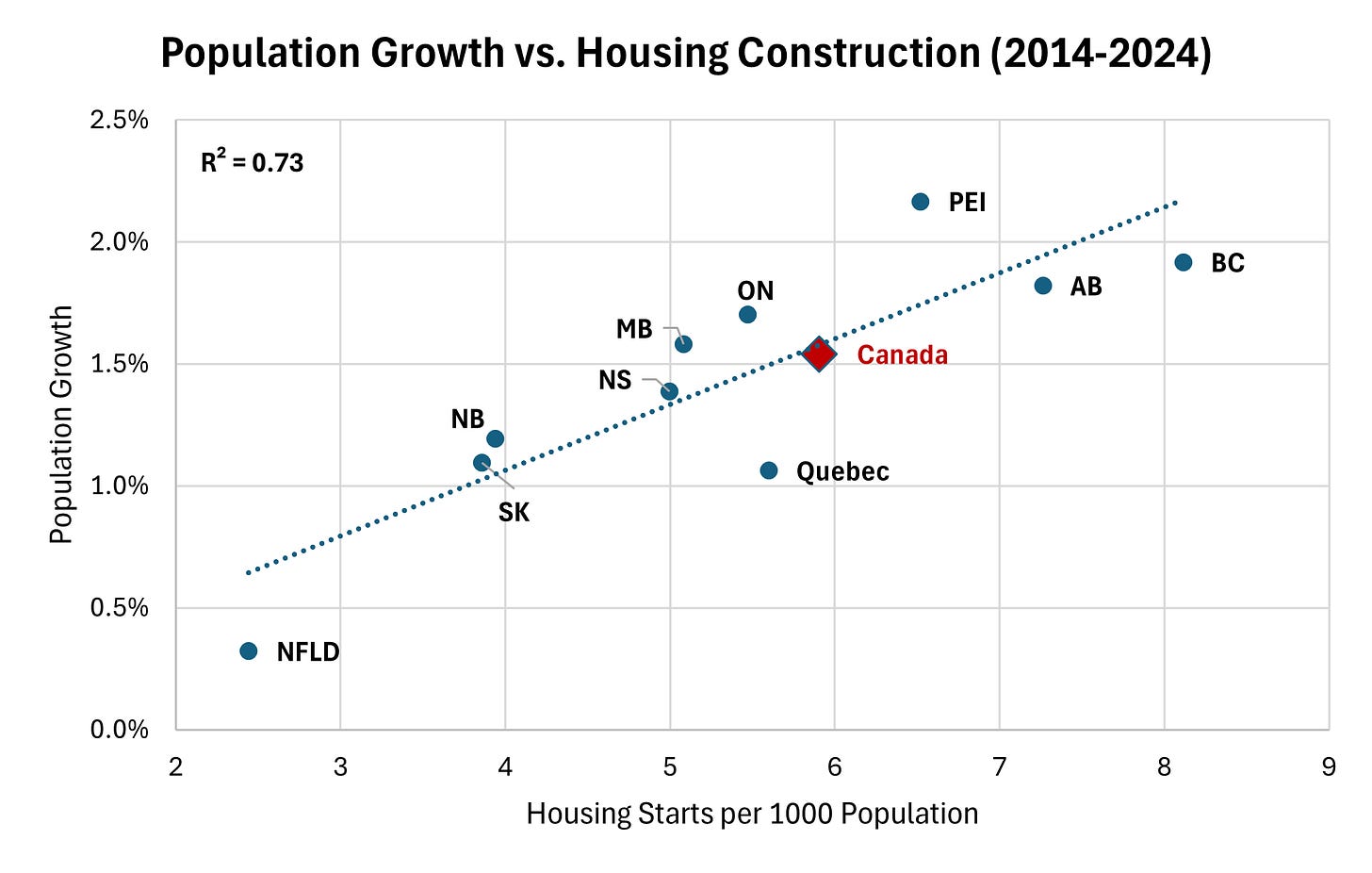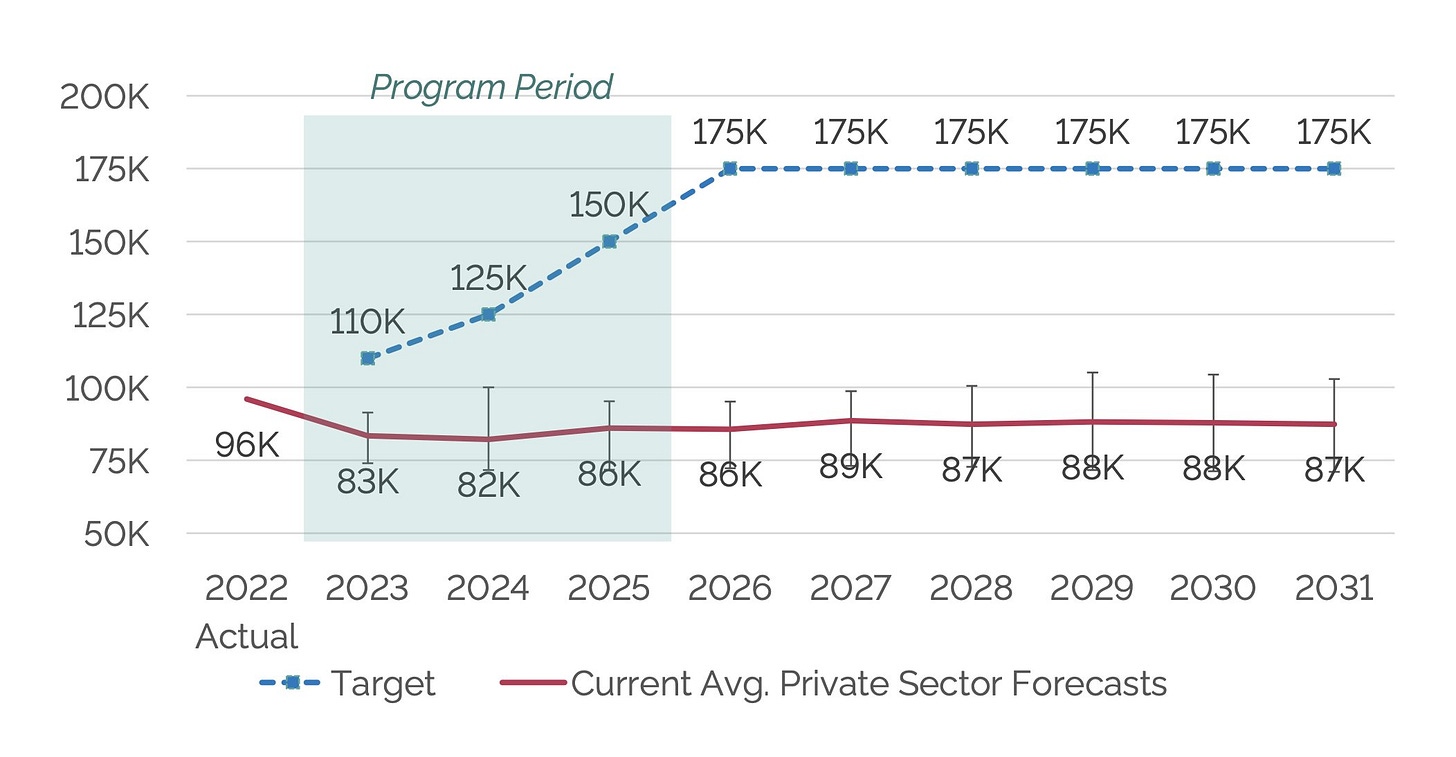Economic development needs to come home
Business subsidies for "good jobs" are solving the problems of the past
In 1975, if you were trying to help a region or community grow, you’d probably think “what factories can we get to open or expand here?”. Manufacturing accounted for ~20% of total employment, often with high wages and growth potential. Good jobs worth pursuing.
In the past 50 years, manufacturing has become less important, because of automation and trade. Nowadays, less than 9% of Canadians work in manufacturing. But our economic development agencies, think ACOA (federal), or Invest Nova Scotia, haven’t really changed their tune. ACOA still describes itself with a business-first mentality:
There’s a good debate to be had about the effectiveness of an approach that targets businesses for expansion. A key drawback is that the targeting may go the other way around. Businesses that want or need to expand anyway can approach the government to pad the numbers on their expansion (an example of adverse selection). Everyone involved gets to claim credit and cut a ribbon, but the bottom line benefits accrue largely to the businesses1.
I can’t find the source quote, but I have heard some say that the only jobs ACOA has truly created are in the head office of ACOA, and I think there’s truth to that. But instead of just bad-mouthing bureaucrats, I want to offer an alternative.
Housing First Economic Development
It’s long been understood that population decline is the central problem facing the Maritimes. With already small populations, a shrinking population makes everything even harder. The flip side of that coin is that anything that generates population growth makes maintaining roads, hospitals, and businesses easier.
What do fast growing provinces do? For one, they build more housing. There’s a very strong correlation between the rate of homebuilding and the rate of population growth.
Note the word correlation! It’s very fair to say that B.C. might be a fast growing province because of the natural beauty - and that the homebuilding follows the unsatiable demand for mild winters and mountain views.
But that’s where it would be good to have economic development agencies think about what is driving population growth in this century. For millions of Canadians, the binding constraint on where they live is not finding a job, but finding a home (Nova Scotia now has a lower unemployment rate than Canada as a whole). There are no major cities in Canada with a healthy rental vacancy rate, and the country as a whole is at a critically low 1.5% vacancy rate. We should expect that any new home will be filled by someone.
And the biggest culprit in the housing crisis, Ontario, is firmly on track to keep underbuilding for a decade plus. It could be disastrous for Ontario, but suggests an endless potential for interprovincial migration as the rest of Canada steals their best and brightest.
Ontario’s Homebuilding Outlook
Build it, and will they come?
So, my bet would be to test the correlation between homebuilding and population - and see if it can be causal. Over the past 10 years, Nova Scotia has been about middle of the pack for homebuilding, with significant scope to increase the rate of homebuilding.
The clearest, though not only, limit on homebuilding are…regulations that limit how much homebuilding you can do (zoning & other regulations). Like many deep-seated problems, this is easier to spot in others than oneself. For example, sunny, rich, California builds a small fraction of Texas and Florida in the U.S., to the point where California has lost population three years in a row, for the first time in its history.
Now to the actual policy mechanism. I’d look to the Housing Accelerator Fund’s success for inspiration. It turns out that when municipalities have even a small carrot (money) to enable more homebuilding, it’s easier to ignore the small minority than insist on stagnation in their communities.
I’d tell the good folks at the agencies to ditch their rolodex of entrepreneurs and executives, and instead call municipalities about how their regulations can be relaxed to build more, or what carrot could be provided to help smooth over “priority sites” for housing2. And this isn’t just a big city thing. Small towns can be less welcoming to the growth needed to maintain the small towns very existence.
After decades of begging businesses to like us - I’d focus on the problems Nova Scotians face today.
Not to mention the ability of political insiders to influence the process, and the fact that subsidies can simply move jobs from one industry to another
You could also just set up a formula for “housing bonuses” based on homebuilding, but I don’t know what the folks at the agencies would be needed for!











I like this idea a lot. The bribe offered to cities to eliminate zoning, not so much. Existing owners who have paid $1 million or more for homes, should not have to wake up to find an 8 unit rental across the street, with the attendant 8 green bins and many garbage bins and blue bags strewn around. This destroys neighborhoods that make a city attractive to the highly productive people that we truly need. More building, yes. Random destruction of neighbourhoods, no! Any young person looking for a good career option should learn how to build. We need builders, not more bureaucracy.